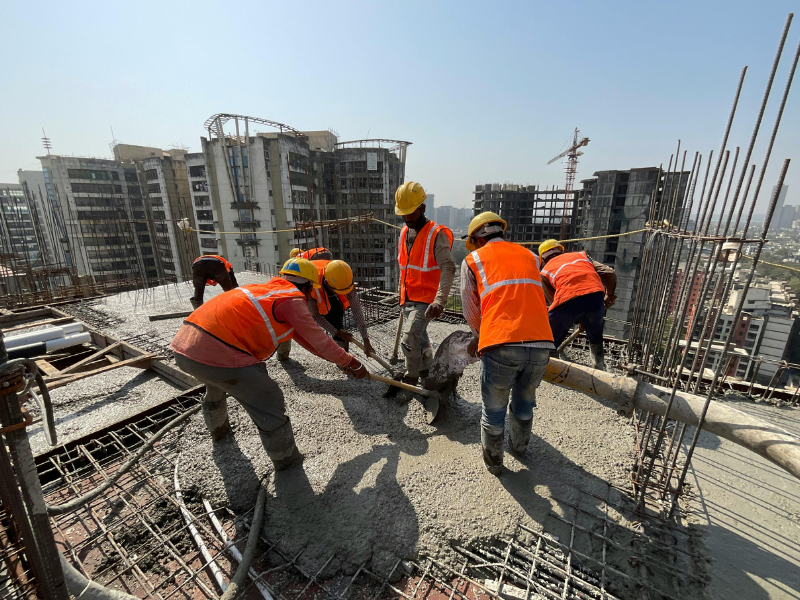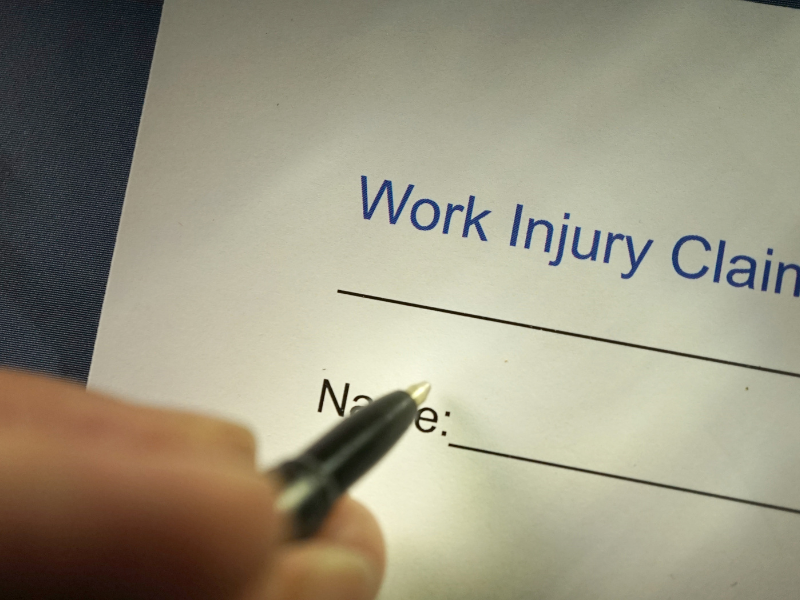Common Workers’ Comp Claims and How to Avoid Them
Workplace injuries can be a costly and difficult experience for both employees and employers. Fortunately, many common workers’ comp claims can be prevented with some basic precautions and preventative measures.
In this blog post, we’ll explore the most frequent types of workers’ comp claims and provide tips on how employers can reduce the risk of workplace injuries. By prioritizing workplace safety and taking steps to prevent injuries, both employees and employers can benefit from a safer, healthier work environment.
So let’s dive in and learn how to avoid some of the most common workers’ comp claims!
Explanation of What Workers' Comp is And Why it's Important
Workers’ compensation (commonly known as workers’ comp) is a type of insurance that provides benefits to employees who suffer job-related injuries or illnesses. It is a no-fault system, which means that injured employees are generally entitled to benefits regardless of who was at fault for the injury.
Workers’ comp benefits can cover medical expenses, lost wages, rehabilitation costs, and other related expenses.
The purpose of workers’ comp is to protect both employees and employers. For employees, it provides financial support and access to medical care if they are injured on the job. For employers, workers’ comp insurance helps protect them from potentially costly lawsuits that may result from workplace injuries or illnesses.
It also incentivizes employers to prioritize workplace safety and reduce the risk of on-the-job injuries, which can ultimately lead to a more productive and profitable workplace. Overall, workers’ comp is an essential component of a healthy and safe work environment.
Brief Overview of Common Workers' Comp Claims
These are some of the most frequent types of workplace injuries and can occur due to slippery floors, poor lighting, or uneven surfaces.
Overexertion can lead to injuries such as sprains, strains, and pulled muscles. These injuries often occur from lifting, pushing, pulling, or carrying heavy objects.
These types of injuries often occur due to repetitive motions or awkward postures. They can affect various parts of the body, including the back, neck, shoulders, and wrists.
These injuries occur due to frequent and repetitive movements, such as typing or using a mouse. They can lead to conditions such as carpal tunnel syndrome.
Workers in certain industries, such as manufacturing or food service, may be at risk of burn injuries due to exposure to hot surfaces, chemicals, or flames.
Workers who use sharp tools or equipment, such as knives or saws, may be at risk of cuts and lacerations.
Unfortunately, some workplaces may be at risk of violence from customers or coworkers, which can lead to injuries such as bruises, cuts, or broken bones.
By taking steps to prevent these types of injuries, employers can help reduce the risk of workers’ comp claims and create a safer workplace for their employees.
Common Workers' Comp Claims
This type of claim occurs when an employee slips or trips on a wet or slippery surface, or on an object left in a walkway. Falls can occur from heights, such as falling from a ladder, or from a lower level, such as falling off a step or down a flight of stairs.
Slips, trips, and falls are one of the most frequent types of workers’ comp claims, accounting for a significant percentage of workplace injuries. These types of injuries can occur in any workplace, from offices and retail stores to construction sites and factories.
Slips occur when a worker loses their footing on a wet or slippery surface, such as a spilled liquid, a freshly mopped floor, or a patch of ice. Trips occur when a worker’s foot catches on an object left in a walkway, such as a cord or a loose rug. Both slips and trips can cause the worker to fall, leading to injuries such as broken bones, sprains, or head injuries.
Falls can occur from a height, such as falling off a ladder or scaffolding, or from a lower level, such as falling down a flight of stairs. Falls from heights can be particularly dangerous, as they can cause severe injuries such as traumatic brain injuries or spinal cord injuries.
Preventing slips, trips, and falls in the workplace requires ongoing efforts from both employers and employees. Employers can take steps to maintain safe walking surfaces, such as promptly cleaning up spills, ensuring that floors are properly maintained, and providing appropriate footwear for workers. They can also mark hazardous areas with warning signs and install handrails and guardrails in areas where falls are more likely.
Employees can also do their part by following safety procedures, reporting any hazards or unsafe conditions, and wearing appropriate footwear for their job. By working together to prevent slips, trips, and falls, employers and employees can create a safer workplace for everyone.
Overexertion injuries occur when an employee strains or pulls a muscle due to lifting, pushing, pulling, or carrying heavy objects. They can also occur from repetitive motions, such as twisting, bending, or reaching.
Overexertion injuries are a common type of workplace injury that can result in significant pain and discomfort for employees. These types of injuries occur when a worker performs a task that exceeds their physical limits, leading to strains, sprains, or other soft tissue injuries.
One of the most common causes of overexertion injuries is lifting heavy objects. When workers lift objects that are too heavy or are lifted improperly, they can strain their muscles, causing pain and discomfort. In addition, pushing or pulling heavy objects can also cause overexertion injuries if workers do not use proper techniques or if the task is too strenuous for their physical capabilities.
Repetitive motions can also lead to overexertion injuries, as they can cause strain on muscles and joints over time. Tasks such as typing, using a mouse, or assembly line work can lead to conditions such as carpal tunnel syndrome or tendonitis.
To prevent overexertion injuries, employers can take steps such as providing lifting equipment or training workers on proper lifting techniques. They can also reduce the risk of repetitive motion injuries by providing ergonomic workstations and allowing for regular breaks to rest and stretch.
Employees can also take steps to prevent overexertion injuries, such as using proper lifting techniques, taking regular breaks, and using ergonomic equipment such as chairs and keyboards. By working together to prevent overexertion injuries, employers and employees can create a safer and healthier workplace.
These types of injuries occur when an employee twists or overextends a muscle or tendon, resulting in a strain or sprain. They can happen due to heavy lifting, awkward postures, or repetitive motions.
Strains and sprains are common types of workplace injuries that can occur when an employee overexerts or twists a muscle or tendon beyond its normal range of motion. These injuries can happen due to a variety of reasons, including heavy lifting, awkward postures, or repetitive motions.
A strain occurs when a muscle or tendon is stretched or torn due to excessive force or overuse. This can result in pain, swelling, and limited mobility. Strains can happen in any part of the body, but are most commonly seen in the back, neck, and shoulders.
A sprain, on the other hand, occurs when a ligament is stretched or torn due to sudden twisting or wrenching movements. This can cause pain, swelling, and bruising around the affected joint, and can make it difficult to move the joint or bear weight on it.
Both strains and sprains can be caused by a range of workplace hazards, including lifting heavy objects without proper technique or assistance, performing repetitive motions without taking breaks, or working in awkward postures that place excessive strain on the muscles and tendons.
Employers can help prevent strains and sprains by providing proper training on safe lifting techniques, ensuring that employees take regular breaks to stretch and rest, and using ergonomic equipment to reduce strain on the body. If a strain or sprain does occur, it is important to seek medical attention promptly to prevent further damage and facilitate a speedy recovery.
Repetitive motion injuries occur due to frequent and repetitive movements, such as typing, using a mouse, or assembly line work. They can lead to conditions such as carpal tunnel syndrome, tendonitis, or bursitis.
Repetitive motion injuries are a common type of workplace injury that can occur due to frequent and repetitive movements. These movements can include typing, using a mouse, or assembly line work, among other activities. Repetitive motion injuries can lead to a range of conditions, including carpal tunnel syndrome, tendonitis, and bursitis.
Carpal tunnel syndrome is a condition that affects the wrist and hand. It is caused by compression of the median nerve, which runs through the carpal tunnel in the wrist. Symptoms of carpal tunnel syndrome can include pain, numbness, tingling, and weakness in the hand and wrist.
Tendonitis is a condition that affects the tendons, which are the connective tissues that attach muscles to bones. It is caused by repetitive motions that put strain on the tendons, leading to inflammation and pain. Tendonitis can occur in any part of the body where tendons are present, but is most commonly seen in the shoulders, elbows, and wrists.
Bursitis is a condition that affects the bursae, which are small fluid-filled sacs that cushion the joints. It is caused by repetitive motions that put pressure on the bursae, leading to inflammation and pain. Bursitis can occur in any joint that has a bursa, but is most commonly seen in the shoulders, hips, and knees.
Employers can help prevent repetitive motion injuries by providing ergonomic equipment, such as adjustable chairs and keyboards, and by implementing job rotation and break schedules to reduce the amount of time employees spend performing repetitive tasks. Additionally, employees can take steps to prevent these injuries by using proper technique, taking breaks to stretch and rest, and seeking medical attention promptly if symptoms arise.
Burns can occur from exposure to hot surfaces, chemicals, or flames. Workers in certain industries, such as manufacturing or food service, may be at greater risk of burn injuries.
Burns are a type of workplace injury that can occur from exposure to hot surfaces, chemicals, or flames. Burns can range from mild to severe, and can cause significant pain, scarring, and even death in severe cases. Workers in certain industries, such as manufacturing or food service, may be at greater risk of burn injuries.
Burns caused by exposure to hot surfaces or flames can happen in a variety of workplace settings, such as factories, construction sites, and kitchens. These burns can result from contact with hot machinery, steam, or open flames, and can range from first-degree burns (mild burns that only affect the top layer of skin) to third-degree burns (severe burns that damage all layers of skin and underlying tissue). Severe burns can also cause shock, dehydration, and infection, and can require extensive medical treatment and rehabilitation.
Burns caused by exposure to chemicals can occur in industries such as manufacturing, agriculture, and healthcare. These burns can result from contact with strong acids or alkalis, or from chemical splashes or spills. Chemical burns can be especially dangerous, as they can cause tissue damage that may not be immediately visible. These burns can range from mild to severe, and can cause long-term damage to the affected area if not treated promptly and properly.
Employers can help prevent burn injuries by providing proper training on the safe use of machinery and equipment, implementing appropriate safety procedures, and providing personal protective equipment, such as heat-resistant gloves and clothing. Additionally, employees can take steps to prevent burns by following safety procedures, using protective equipment, and reporting any hazards or unsafe conditions to their employer.
If a burn injury does occur, it is important to seek medical attention promptly to prevent further damage and facilitate a speedy recovery. Severe burns may require hospitalization and specialized treatment, such as skin grafts or physical therapy.
Workers who use sharp tools or equipment, such as knives or saws, may be at risk of cuts and lacerations. This type of injury can also occur from broken glass or other sharp objects.
Cuts and lacerations are a common type of workplace injury that can occur when workers use sharp tools or equipment, such as knives or saws. This type of injury can also occur from broken glass or other sharp objects. Workers in industries such as construction, manufacturing, and food service may be at a higher risk of cuts and lacerations.
Cuts and lacerations can range from minor injuries that require basic first aid to severe injuries that may require surgery and extended recovery time. The severity of the injury depends on the depth and location of the cut or laceration, as well as the size and shape of the object that caused the injury.
Workers can help prevent cuts and lacerations by using appropriate safety equipment, such as cut-resistant gloves and safety glasses, when handling sharp tools or equipment. Employers can also help prevent these injuries by providing training on the safe use of tools and equipment, implementing appropriate safety procedures, and ensuring that workers have access to appropriate personal protective equipment.
If a cut or laceration does occur, it is important to seek medical attention promptly to prevent infection and ensure proper healing. Depending on the severity of the injury, treatment may include cleaning and dressing the wound, stitches or staples, and antibiotics to prevent infection. In some cases, surgery may be required to repair damaged tissue and nerves.
Unfortunately, some workplaces may be at risk of violence from customers or coworkers, which can lead to injuries such as bruises, cuts, or broken bones. This can include physical altercations or threats of violence.
Workplace violence refers to any act or threat of physical violence, harassment, intimidation, or other threatening behavior that occurs at the workplace. Workplace violence can result in a range of injuries, from minor bruises and cuts to serious physical harm, including broken bones, internal injuries, or even death.
Violence at work can come from a variety of sources, including customers, clients, coworkers, and even strangers. It can be triggered by various factors, such as stress, frustration, mental illness, substance abuse, personal disputes, or workplace conflicts.
Physical altercations are one form of workplace violence, which may include punching, kicking, hitting, or pushing. Such acts can cause serious injuries, and can be particularly dangerous if they occur in hazardous work environments, such as construction sites or factories. Moreover, verbal threats of violence, intimidation, or harassment can also cause significant harm, such as emotional distress or anxiety.
Employers have a legal responsibility to provide a safe working environment for their employees, which includes taking appropriate measures to prevent and address workplace violence. This may involve implementing policies and procedures to prevent violence, such as training programs for employees, security measures, and incident reporting protocols.
In conclusion, workplace violence can have serious physical and emotional consequences for victims, and can disrupt the workplace as a whole. It is essential for employers to take steps to prevent and address workplace violence, to ensure the safety and well-being of their employees.
By identifying the most frequent types of workers’ comp claims and understanding how they occur, employers can take steps to prevent these injuries from happening in the first place.
How to Avoid Common Workers' Comp Claims
Tips for employers on how to prevent workplace injuries, such as:
~ Maintaining a clean and organized workspace
~ Providing proper training and education to employees
~ Offering ergonomic equipment and workstations
~ Encouraging employees to take breaks and stretch regularly
What to Do if an Injury Occurs
Explanation of the steps employees should take if they are injured on the job, including:
~ Reporting the injury to their supervisor as soon as possible
~ Seeking medical attention
~ Filing a workers’ comp claim
Preventing common workers’ comp claims is crucial for both the well-being of employees and the financial health of the company. By implementing safety protocols, providing training, and fostering a culture of safety, employers can reduce the risk of workplace injuries and save money on workers’ compensation insurance premiums.
Employers who prioritize workplace safety demonstrate their commitment to the well-being of their employees, and create a positive work environment that promotes productivity, loyalty, and job satisfaction. By investing in injury prevention measures, employers can protect their workforce and promote long-term success for their business.
In conclusion, it is essential for employers to prioritize workplace safety and injury prevention. By taking proactive steps to reduce the risk of workplace injuries, employers can create a safer, healthier, and more productive workplace for their employees.









